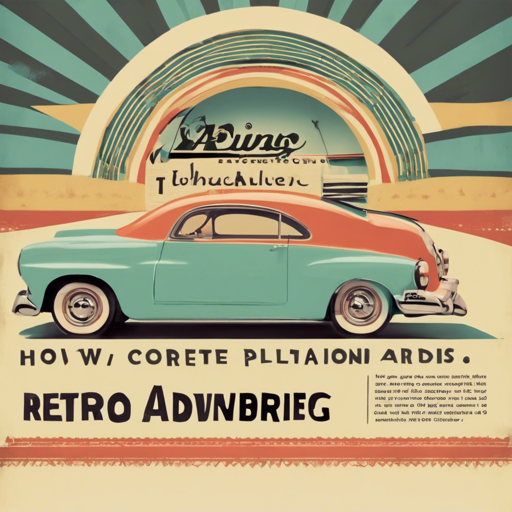Are you ready to take a nostalgic trip back in time and create eye-catching retro advertisements? In this guide, we’ll show you how to harness the power of the Retro Ad Flux model, a LoRA fine-tuned on the charm of mid-century print ads. Hold onto your berets as we explore this exciting tool!
Understanding the Retro Ad Flux Model
The Retro Ad Flux model is like a time machine for your imagination, allowing you to blend photorealistic illustrations and vintage photographs to craft timeless advertisements. With its ability to understand natural language prompts, it can bring your creative visions to life. Imagine it as a skilled artist in an old-style studio, waiting for you to instruct it on what masterpiece you’d like to create.
Getting Started
To begin creating your retro advertisements, you’ll need to follow these steps:
- Download the Model: First, you’ll want to obtain the weights for the Retro Ad Flux model. These can be found in Safetensors format under the Files versions tab.
- Set Your Prompt: Use natural language to describe the ad layout. Specify the elements you want, such as headlines, subheadings, and image styles.
- Use Trigger Keywords: Include keywords like
m1dc3nturyandvintage advertisementin your prompts to enhance image generation.
Crafting Your First Ad
Let’s walk through how to prompt the model for a retro car advertisement:
m1dc3ntury ad 1960s photograph of a man sitting in a new luxury red car for an automotive advertisement, facing the viewer, photography shoot, post production, the image has printing artifacts and wear from being aged over years. Rule of thirds composition, ethereal science fiction style scene, avocado green carpet floors. This is a full page ad with the text above saying "The New Flux" subheading "Live fast, drive comfortably."Imagine this process as designing a vintage car commercial. You would need to carefully consider each aspect just as an artist focuses on every detail of a painting. In this analogy, your text serves as the artistic direction, where you’re describing not just what is to be seen but also the emotions that each image should provoke.
Troubleshooting Common Issues
If you encounter issues or unexpected results while creating your ads, here are some troubleshooting ideas:
- Image Quality: If your images aren’t coming out as desired, try adjusting the strength of your prompts. Recommended strengths are between 0.7 – 0.9.
- Prompt Clarity: Be detailed in your natural language but avoid overly complex phrases. Simplicity often yields better results.
- Referencing Prior Models: If the outputs are not satisfactory, revisit your previous models for inspiration or settings that worked well.
For more insights, updates, or to collaborate on AI development projects, stay connected with fxis.ai.
Final Thoughts
At fxis.ai, we believe that such advancements are crucial for the future of AI, as they enable more comprehensive and effective solutions. Our team is continually exploring new methodologies to push the envelope in artificial intelligence, ensuring that our clients benefit from the latest technological innovations.
Now that you have the tools and knowledge, go ahead and start crafting your own nostalgic advertisements! Happy creating!

